The following seven Roman mosaics are all currently on display in the Palazzo Massimo alle Terme National Museum, Rome. Mosaics were a common feature of Roman private homes and public buildings across the empire from Africa to Antioch. Mosaics, otherwise known as opus tesellatum, were made with small black, white, and coloured squares typically measuring between 0.5 and 1.5 cm, but fine details were often rendered using even smaller pieces as little as 1 mm in size. These squares (tesserae or tessellae) were cut from materials such as marble, tile, glass, smalto (glass paste),pottery, stone, and even shells. A base was first prepared with fresh mortar, and the tesserae positioned as close together as possible with any gaps then filled with liquid mortar in a process known as grouting. The whole was then cleaned and polished. Mosaics were by no means limited to flooring. Vaults, columns, and fountains were often decorated with mosaic, especially in Roman baths. Popular subjects were figures and scenes from Roman mythology, landscapes, and still-lifes.
To read more about this fascinating art form, see Ancient History Encyclopedia’s article on Roman Mosaics.
Seasons Mosaic
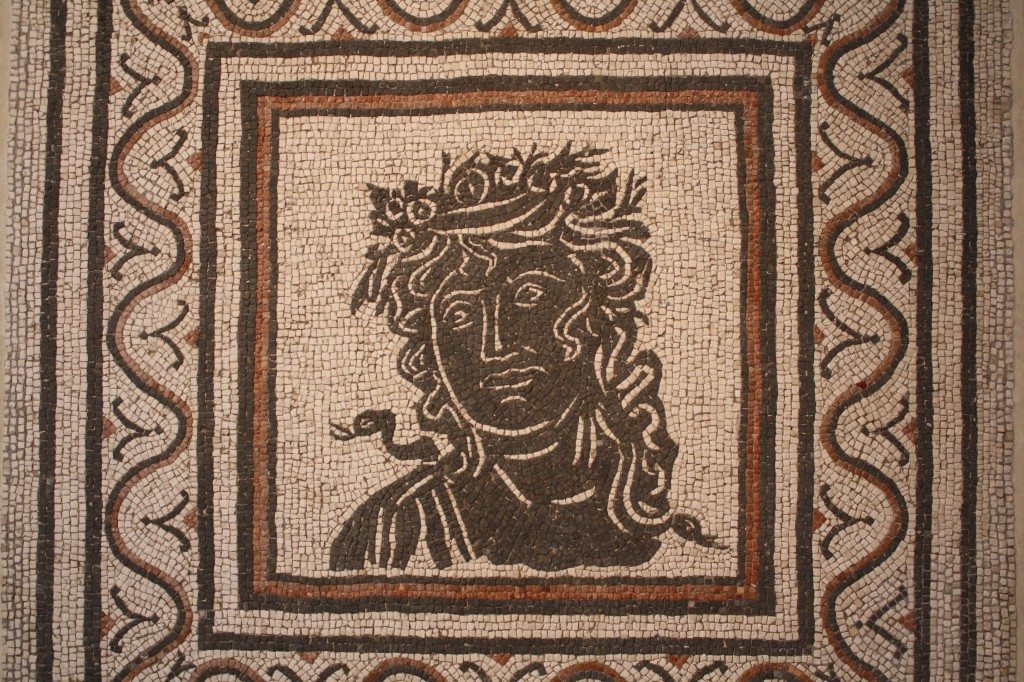
A Roman floor mosaic dating to the 3rd century CE and depicting one of the four seasons. Black and white mosaics were very popular throughout the Roman period in Italy. Provenance: via Prenestina, Rome.
Bacchus

A 3rd century CE Roman floor mosaic depicting Bacchus, god of wine. From via Flaminia, Rome.
Geometric Mosaic
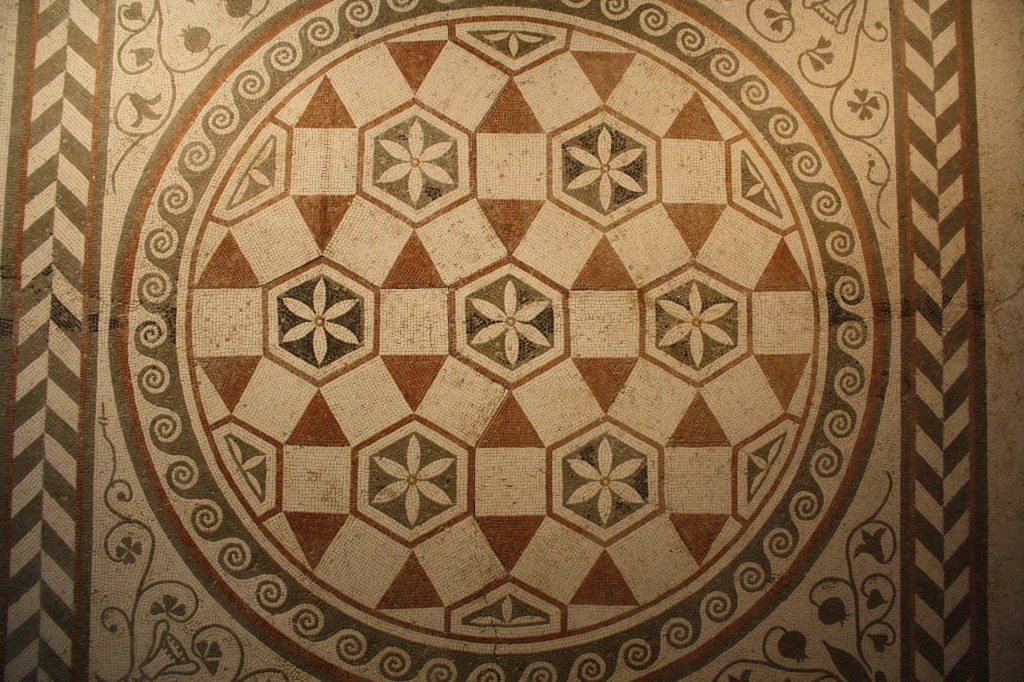
A Roman floor mosaic in geometric design dating to the late 1st century CE. From a villa near Guido Castle, near Rome.
Dionysos
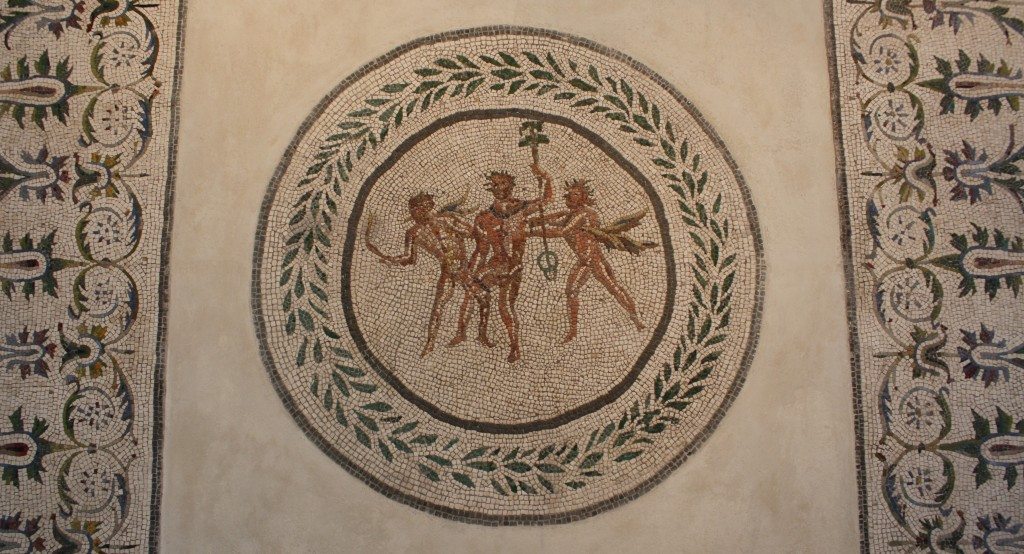
A 2nd century CE floor mosaic depicting Dionysos and satyrs with laurel crowns. From the area of the Villa della Farnesina, Rome.
Dionysos fighting Indians

A Roman floor mosaic dating to the 4th century CE and depicting Dionysos fighting Indians. Dionysos was a very popular subject in Roman mosaics. Provenance: Villa Ruffinella, Rome.
Nike Mosaic
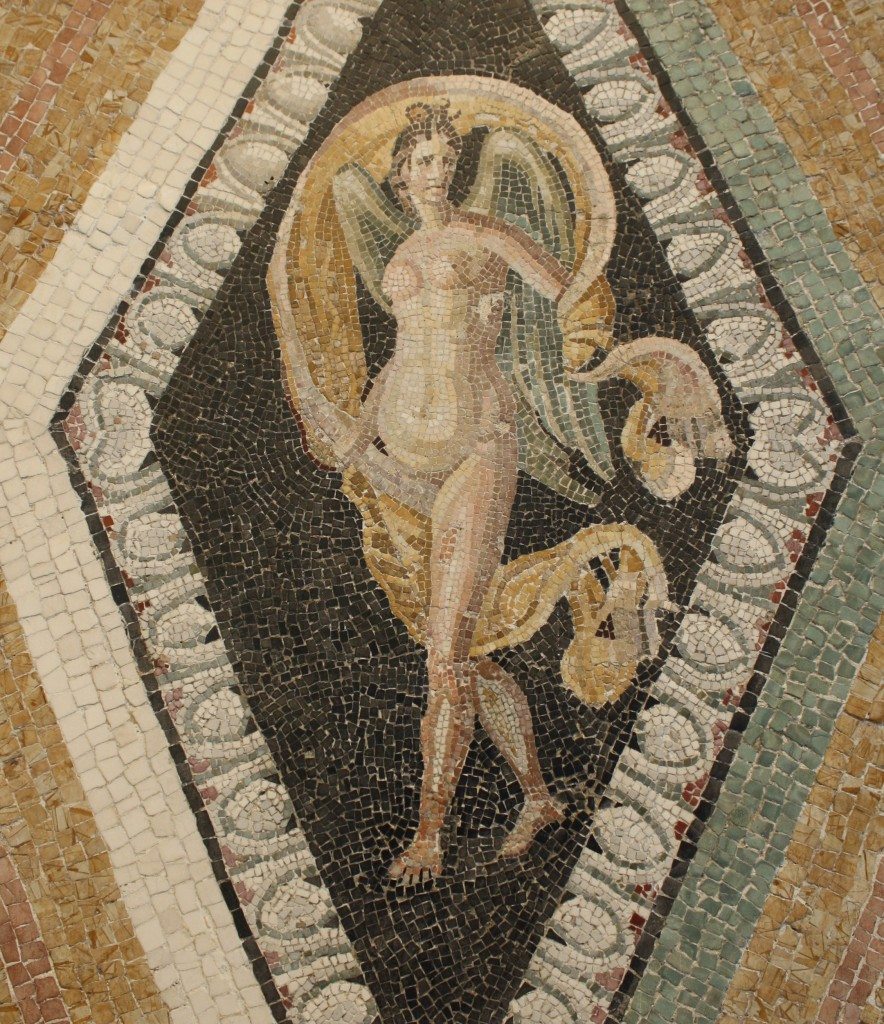
A Roman floor mosaic dating to the 1st century BCE and depicting Nike. From a Roman villa near via Ruffinella, Rome.
Theatre Mask
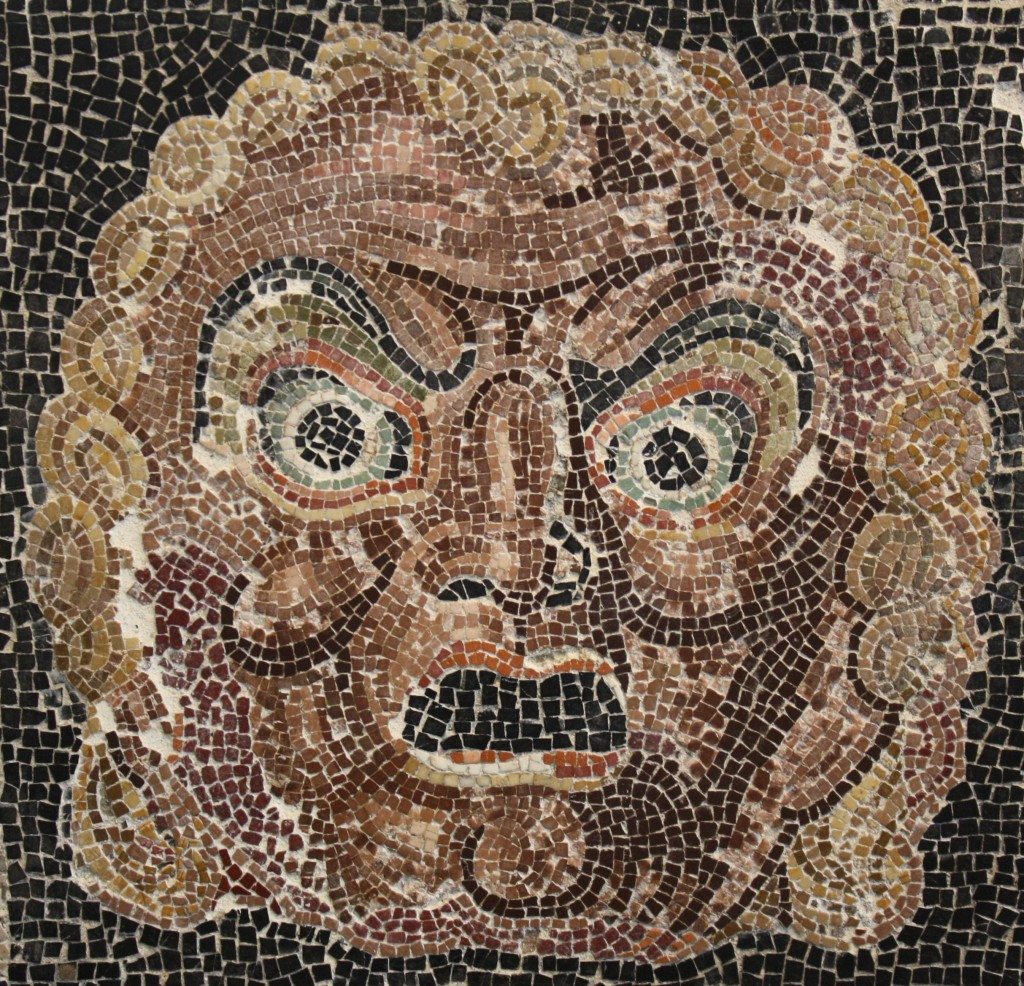
A theatre mask mosaic, 1st century BCE. From a private villa in the area of Villa Ruffinella, Rome.
All images were taken by the author and can be seen on the Ancient History Encyclopedia website.

